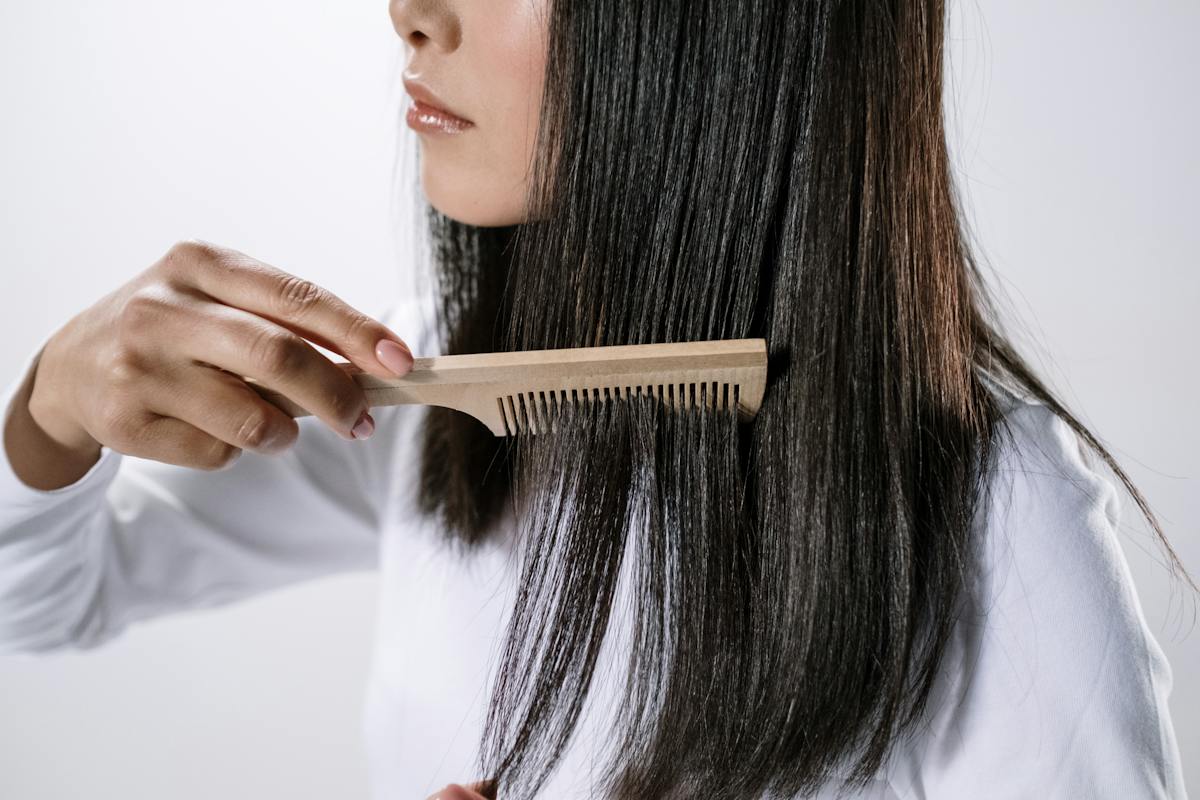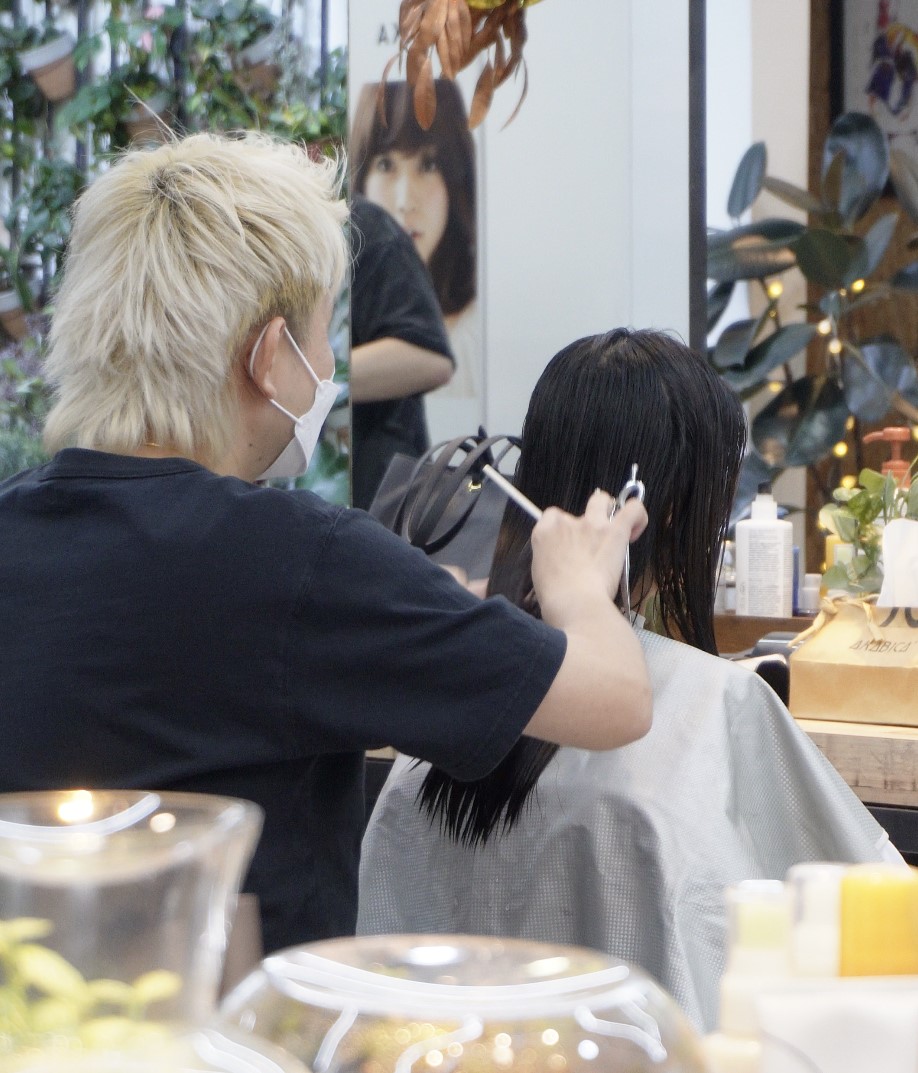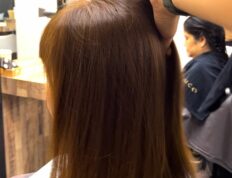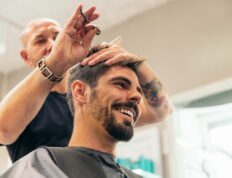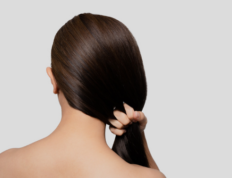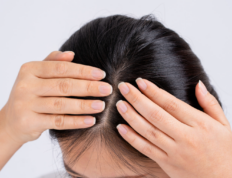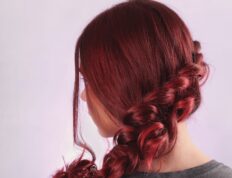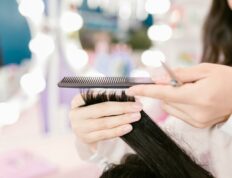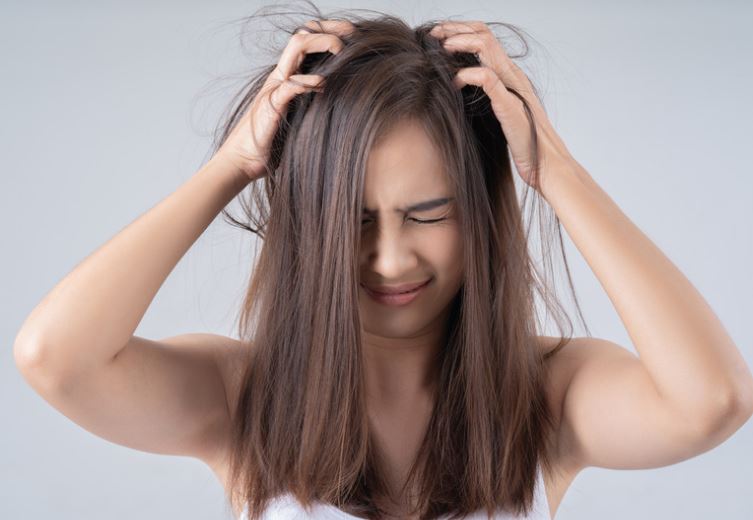
Dealing with frizzy hair can often feel like a never-ending battle, particularly in Singapore’s humid climate. This common hair concern transcends hair types and textures, leaving many in a quandary about its origins and solutions. In this comprehensive guide, we delve into the underlying causes of frizzy hair and provide practical, effective strategies to manage and combat it.
From understanding the science behind hair frizz to adopting the right haircare routine, we’ve got you covered with expert tips and insights. So, let’s unravel the mystery of frizzy hair and explore how you can tame it with confidence and ease.
Surprising Causes of Frizzy Hair
Image via Helena on Pexels
Rough Towel Drying
Drying your hair with a standard bath towel might seem harmless, but it can be quite detrimental. The rough texture of conventional bath towels can cause friction, leading to hair cuticle damage. This damage opens the door to frizz, as roughed-up cuticles are more prone to moisture loss and external humidity absorption.
Over-Brushing
While regular brushing is essential for hair health, overdoing it can have adverse effects. Excessive brushing, especially when the hair is dry, can lead to breakage and split ends. These damaged strands are more prone to frizz as they are weaker and less able to retain moisture.
Using the Wrong Products
Haircare products play a crucial role in maintaining hair health, but not all products suit every hair type. Using products not formulated for your specific hair type can lead to imbalances in moisture and protein, resulting in frizz. It’s vital to choose products that cater to your hair’s unique needs.
Not Using Heat Protection
Heat styling tools are a staple in many styling routines, but without proper protection, they can wreak havoc on your hair. Heat can strip away moisture and natural oils, leaving hair dry and frizzy. Always use a heat protectant spray or serum to shield your hair from these damaging effects.
Rinsing Your Hair With Hot Water
A hot shower might be relaxing, but it’s not so kind to your hair. Hot water can strip essential oils and moisture from your hair, leading to dryness and frizz. Opt for lukewarm water when washing your hair, and consider a final rinse with cooler water to help seal the hair cuticles.
You Have Split Ends
Split ends are not just unsightly; they are a clear sign of hair damage and can contribute significantly to frizz. They occur when the protective outer layer of the hair strand is damaged and begins to unravel. Regular trims are essential to keep split ends at bay and prevent frizz.
Humidity
Humidity is one of the most well-known culprits of frizzy hair. In humid conditions, hair absorbs moisture from the air, causing the hair shaft to swell and disrupt the cuticle. This leads to the hair appearing frizzy and unmanageable. Products designed to combat humidity can be a lifesaver in such conditions.
How to Tame and Manage Frizzy Hair
Image via cottonbro studio on Pexels
Tackling frizzy hair is not just about treating it when it occurs; it’s about creating a routine that prevents it from happening in the first place. Here are some essential steps you can take to manage and reduce frizz, ensuring your hair remains smooth and manageable.
Go for Regular Trims
Regular haircuts are not just about keeping your style looking sharp; they’re essential for preventing frizz. Trimming your hair every six to eight weeks helps to remove split ends and prevent further splitting up the hair shaft. Keeping your hair free of these damaged ends reduces the likelihood of frizz and keeps your hair looking healthy and sleek.
Follow a Frizz-Fighting Hair Washing Regimen
Your choice of shampoo and conditioner plays a significant role in managing frizz. Opt for products specifically designed to combat frizz, typically those that are hydrating and sulphate-free. When washing your hair, use lukewarm water to avoid stripping the hair of its natural oils, and finish with a cool rinse to close the cuticles, which helps reduce frizz. Also, consider reducing the frequency of hair washes to prevent drying out your hair.
Apply Hair Masks or Leave-in Treatments
Deep conditioning treatments, such as hair masks or leave-in conditioners, can work wonders in taming frizz. These treatments penetrate deep into the hair shaft, providing intense moisture and nourishment. Ingredients like argan oil, coconut oil, or shea butter are excellent for frizz control. Apply these treatments regularly – once a week for hair masks and daily or as needed for leave-in treatments – to keep your hair smooth and frizz-free.
Use a Heat Protection Spray
Heat styling can be a major contributor to frizz, so it’s crucial to protect your hair. Always apply a heat protection spray before using tools like hairdryers, straighteners, or curling irons. These sprays create a protective barrier over the hair shaft, helping to lock in moisture and prevent the high heat from causing dryness and frizz. Remember, even with a heat protectant, it’s best to use heated styling tools sparingly.
Use a Hair Styling Stick
A hair styling stick is an innovative tool in the battle against frizz, particularly for taming flyaways and keeping your hairstyle intact. These sticks are formulated to provide a light, non-sticky hold, smoothing down those pesky stray hairs without weighing your hair down. They’re incredibly user-friendly – just gently glide the stick over any frizzy areas. Their compact size makes them perfect for on-the-go touch-ups, ensuring your hair remains sleek throughout the day.
Use the Right Type of Brush to Control Frizz
The type of brush you use can have a significant impact on frizz. Brushes with natural bristles, like boar bristles, are excellent for distributing the natural oils from your scalp throughout your hair, which helps to keep frizz at bay. For those with thicker, coarser hair, a wide-tooth comb can be more effective. It detangles without causing the breakage and frizz associated with finer-toothed brushes. Remember, the key is gentle, consistent care to avoid damaging the hair cuticle.
Sleep on Silk Pillowcases
Silk pillowcases can be a luxurious yet practical addition to your frizz management routine. Unlike cotton, silk causes less friction against your hair as you sleep, which means less frizz and fewer tangles in the morning. Additionally, silk helps to maintain your hair’s natural moisture levels, unlike cotton which can absorb your hair’s oils, leaving it drier and more prone to frizz. Switching to silk pillowcases is a simple change with noticeable benefits for your hair’s texture and overall health.
Opt for Professional Treatments at the Salon
For those seeking more intensive frizz control, professional treatments at a salon can be a game-changer. Expert stylists, such as those at Act Point Salon, offer a range of treatments specifically designed to combat frizz and improve hair texture. These treatments often involve deep conditioning, keratin treatments, or other specialised processes that nourish and smooth the hair. While these treatments can be an investment, they often offer longer-lasting results and can significantly improve the manageability and appearance of frizzy hair.
Conclusion
In summary, managing frizzy hair effectively requires a blend of regular hair maintenance, such as trims and using the right products, combined with specific techniques like using a styling stick and silk pillowcases. Professional salon treatments can also offer advanced solutions. Consistency in your hair care routine is essential for achieving smoother, more manageable hair, boosting both its health and your confidence.

